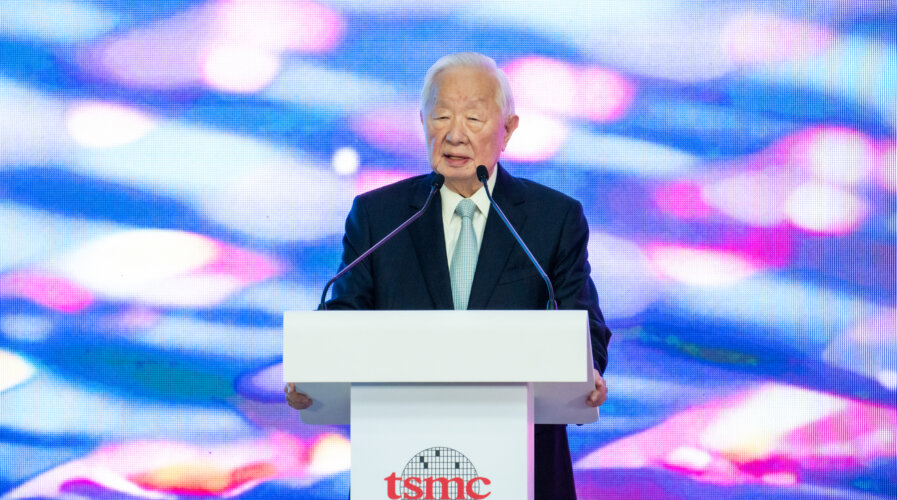
TSMC is betting on silicon photonics to spur growth and make AI applications like ChatGPT even more powerful.Photo by Taiwan Semiconductor Manufacturing Company Limited / AFP
TSMC says silicon photonics could make ChatGPT more powerful
- TSMC is betting on silicon photonics to spur growth.
- The technology could also make AI applications like ChatGPT even more powerful.
- Intel, Cisco, and IBM are among the players working on new solutions and systems.
In the last couple of years, silicon photonics has grown more prominent, largely due to the rapidly evolving world of data centers. Given the demand for higher data transmission speeds, energy efficiency, and increased scalability, silicon photonics has become a critical building block in data centers.
While this technology has been used commercially for at least the last decade, it has never achieved mainstream status, primarily because Moore’s Law scaling has met most power and performance needs at a lower price point.
Silicon photonics has been limited to applications such as networking chips, where price is less of a factor and latency and low power are critical.
However, technologies are evolving at an unprecedented scale, causing bandwidth demand to rise continually. Especially since ChatGPT came on stream, creating an AI-ripple effect, more semiconductor players are talking about silicon photonics. Even Taiwan Semiconductor Manufacturing Co, the world’s most significant chip player, announced recently that it is betting big on silicon photonics.
What is silicon photonics?
The silicon photonics market. Source: Markets and Markets.
According to Intel Corporation, one of the few companies at the forefront of this technology, silicon photonics combines two of the most important inventions of the 20th century—the silicon integrated circuit and the semiconductor laser. “It enables faster data transfer over longer distances compared to traditional electronics while utilizing the efficiencies of silicon,” the company said on its website.
In fact, we are at a juncture where the market is witnessing a revolution driven by major players such as Intel, Cisco Systems, Inc., Acacia Communications, Inc., and NeoPhotonics Corporation. According to MarketsandMarkets, the silicon photonics market was valued at US$1.3 billion in 2022 and is projected to reach US$5 billion by 2028, growing at a CAR of 28.5% from 2023 to 2028.
Opportunities in the APAC market.
In the Asia Pacific region, the market is estimated to garner the largest revenue by the end of 2035. Its growth is mainly attributed to the increasing number of data centers and the growing demand for high-speed internet connections in the region.
What is TSMC’s plan?
As the world’s biggest contract chipmaker, already manufacturing the most advanced AI chips on the market, TSMC is looking to boost performances, according to a report by Nikkei Asia. Douglas Yu, vice president of pathfinding for system integration at TSMC, said, “If we can provide a good silicon photonics integration system… we can address both critical issues of energy efficiency and computing power [performance] for AI.”
Yu was speaking at a forum earlier this week ahead of the opening of the SEMICON Taiwan industry fair. “This is going to be a new paradigm shift. We may be at the beginning of a new era.” Yu also noted that the driving force for a better and more integrated silicon photonic system is the massive computing power needed to run large language models — the technology that underpins chatbots like ChatGPT and Bard — and other AI computing applications.
So far, according to Yu, TSMC is working on technologies to build an integrated system, using its advanced chip stacking and packaging technologies. Yu told Nikkei Asia such an integrated system to combine and connect silicon photonics and different types of chips using its own chip packaging and stacking technology is still under development and has yet to enter mass production.
The basics of silicon photonics.
READ MORE
- Safer Automation: How Sophic and Firmus Succeeded in Malaysia with MDEC’s Support
- Privilege granted, not gained: Intelligent authorization for enhanced infrastructure productivity
- Low-Code produces the Proof-of-Possibilities
- New Wearables Enable Staff to Work Faster and Safer
- Experts weigh in on Oracle’s departure from adland






